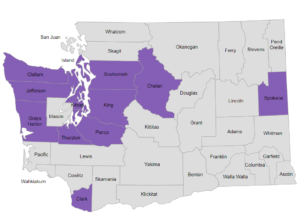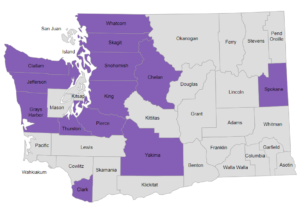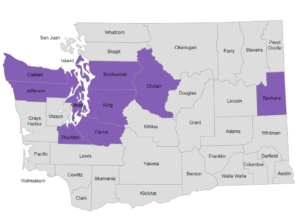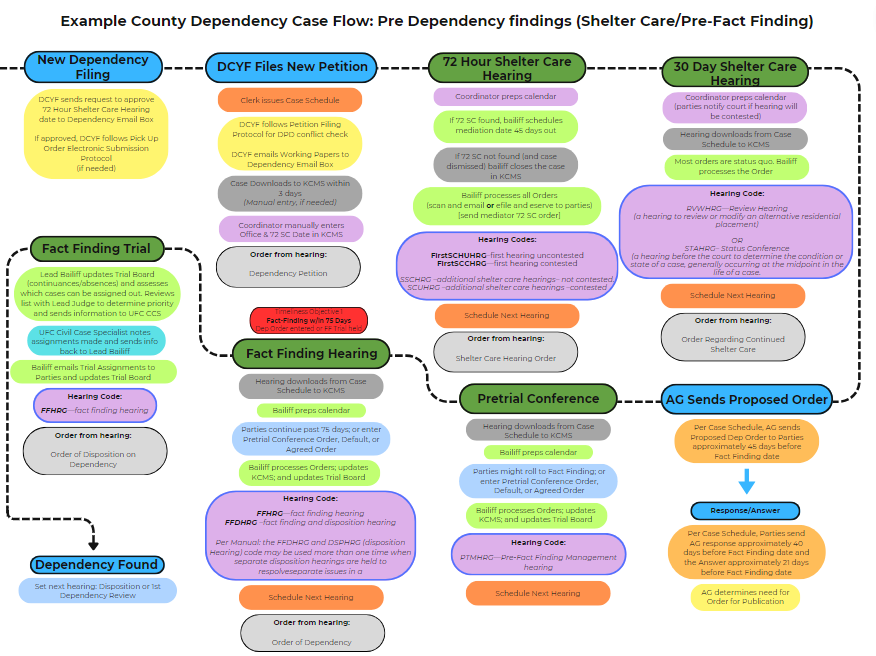Childhood health experts are deeply concerned that the COVID-19 pandemic has serious consequences for children and youth, delaying their cognitive, emotional and social development. As of November 2020, DOH experts advise that we are in the disillusionment phase of the pandemic, which leads to many individuals feeling burnt out, exhausted, and overwhelmed. Depression, anxiety, and suicide risk are common behavioral health responses to this phase.
This reality is especially concerning for young people. The Center for Disease Control and Prevention (CDC) estimates that one in four people under the age of 18 have struggled with suicidal thoughts since the start of the pandemic. Additionally, mental health-related visits to emergency departments for children ages 5-17 increased by 24-31% between April and October of 2020, compared with the same time period in 2019. Children in foster and relative care, who have also experienced abuse or neglect and the trauma of removal, are likely to experience disproportionately more significant behavioral health impacts from the pandemic.
Resources for understanding the pandemic’s impact on children, youth and families
Washington State Department of Health COVID-19 Behavioral Health Resources web page provides a wealth of information, including monthly forecast reports that monitor current and potential trends of adverse behavioral health outcomes as a result of COVID-19, intended to help leaders understand what to expect and where to focus efforts responding to behavioral health impacts. The December 2020 report is available here.
News articles on the unique mental health challenges faced by children and youth during the pandemic:
- “Suicide Looms Large in Minds of Many Foster Youth.” By Emily Gurnon. The Imprint, 9/27/20.
- “For months, he helped his son keep suicidal thoughts at bay. Then came the pandemic.” By William Wen. The Washington Post, 11/23/20.
- “Children of Quarantine – What does a year of isolation and anxiety do to a developing brain?” by Lisa Miller. The Cut, 11/24/20.
Resources for supporting the mental health of youth in care during COVID-19
The Behavioral Health Group Impact Reference Guide describes behavioral health impacts and recommendations for some occupations and social roles that could be more heavily affected by the COVID-19 pandemic and includes a section on families and children. The overview, tools, and examples are provided to inform messaging, training, and interventions that are likely to be the most effective for each group.
The Behavioral Health Toolbox for Families: Supporting Children and Teens During the COVID-19 Pandemic provides tips on how to navigate some of the emotional responses that families may experience during the COVID-19 pandemic. The toolbox offers general information about common emotional responses of children, teens and families during disasters. Families, parents, caregivers and educators can use this information to help children, teens and families recover from disasters and grow stronger.
“Coping with COVID” podcast and blog series. Disasters, like the COVID-19 pandemic, have known impacts on our behavioral health. In this series of conversations, disaster psychologist Kira Mauseth, PhD and psychiatrist Doug Dicharry, MD discuss how the pandemic impacts us – what we’re feeling, why we’re feeling it, and what we can do about it.
The Office of the Superintendent of Public Instruction (OSPI) maintains a comprehensive list of resources to support student well-being and school safety.
Specific recommendations, guidance, and resources provided by Child Trends and the Child Trauma Training Center at the University of Massachusetts Resources. Child Trends: Resources for Supporting Children’s Emotional Well-being during the COVID-19 Pandemic.
The Washington Health Care Authority recently released a Provider Alert regarding increased concern of suicide risk in youth during COVID-19. The alert encourages health care providers to screen patients, especially children and youth, for suicide risk and to share information on suicide warning signs and crisis resources with patients and their families.
Resources for children and teens
- Teen Link: 866-833-6546. Chatting and texting options are also available.
- Behavioral Health Toolbox for Families
- Finding the Right Words to Talk with Children and Teens
- Discussing Coronavirus with Your Children
- Supporting Homebound Children
- Virtual sessions and resources for parents in English and Spanish




